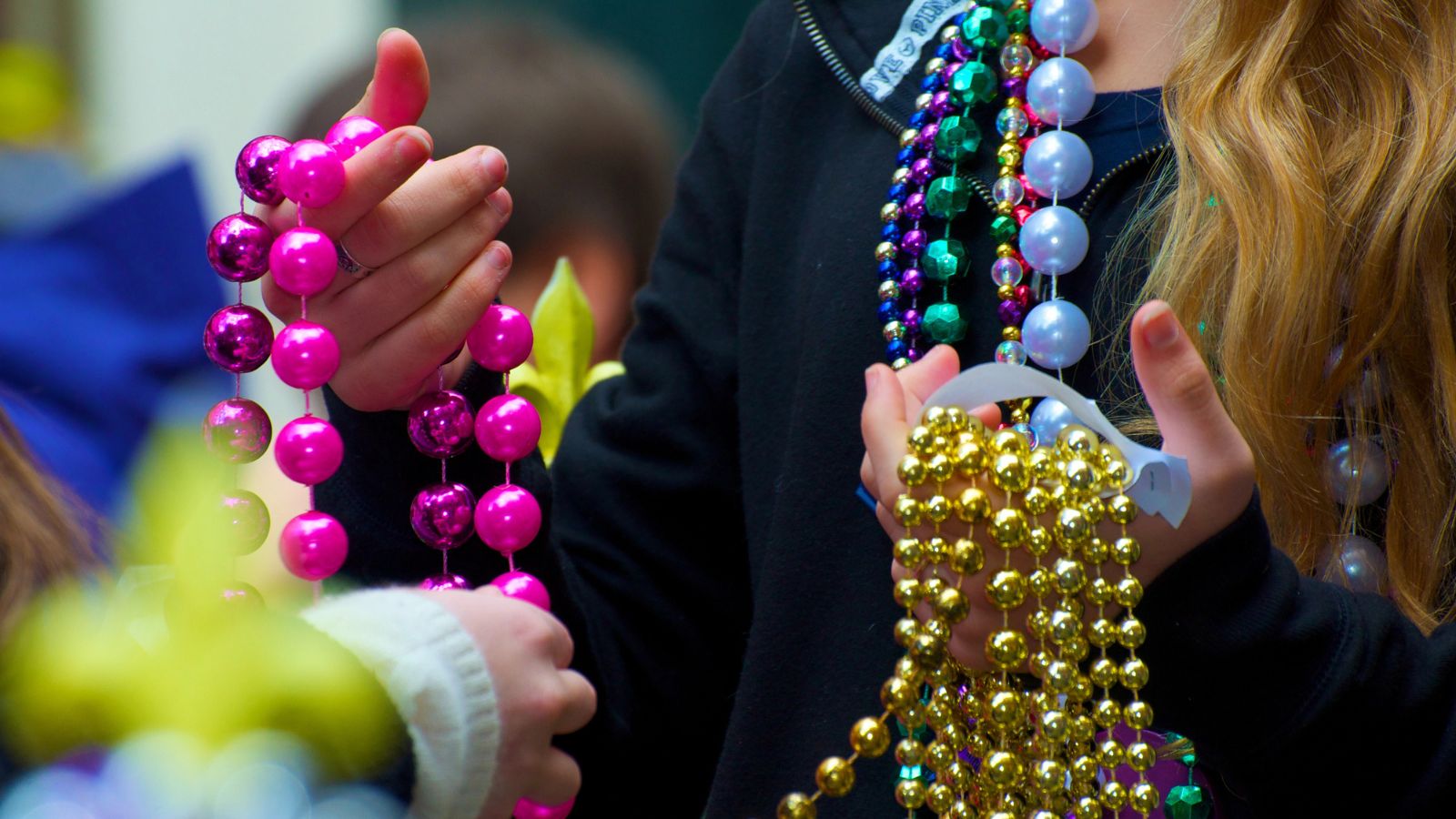A Mardi Gras Guide For First Timers
New Orleans residents—and a million visitors—gather in the Louisiana streets on the final day of Carnival. On this particular night before Ash Wednesday, parade participants and partiers pile into the streets, behind barricades or on floats, to ring in the last night before the 40 days of Lent. In other words, Mardi Gras is a time to party. Since New Orleans hosts the largest Mardi Gras gathering in the world, we've compiled a comprehensive Mardi Gras guide for first-timers flocking to the festivities this year.
A Mardi Gras Guide For First Timers

If you want to celebrate Mardi Gras in New Orleans, here's what you need to know.
Why New Orleans?
An estimated one million people will show up in New Orleans this year for the February 13th celebration. The masquerade's origins relate to the discovery of Louisiana and its haunted NOLA. An explorer, Jean Baptiste Le Moyne Sieur de Bienville, landed in the southern area on March 2, 1699. That year, Mardi Gras fell on March 3, so Bienville named the plot of land Pointe du Mardi Gras and welcomed the revelries through the land. Visitors may favor more of the parade's partying aspect, yet the historical relevance pumps the party's lifeline.
What Does a Parade Look Like?
Mardi Gras is one day of an assembly of parades and festivities. The main event commences on February 13 this year. Hordes of costumed people combine behind silver barricades that protect the parade participants from the rowdy revelers. The official French Quarter website informs guests Mardi Gras garb consists of extravagant costumes. Donning a feathery headdress, lathering your body in sparkles, and wearing a purple, gold, and green outfit are all common themes. For Mardi Gras, the bigger, the better. The more outrageous, the more attention you receive from those on the opposite side of the barricade. Masks are another popular accessory for Mardi Gras costumes. Stick to the traditional purple, green, and gold eye masks, or enhance your look with a multicolored jester mask.
Floats rolling through the parade streets carry the most festive individuals. Members standing on floats belong to a Krewe or a dedicated group devoted to crafting an ideal Mardi Gras experience. Krewes work on their look, float, bead throws, and costumes from the day after Mardi Gras until the parade. Today's floats evolved from horse-drawn carriages of the initial Mardi Gras pageants into hand-painted, snail-paced creations. Krewe members chuck beads and toys at the parade-goers, propped up on the float adorned with papier-mache art and sparkling lights. Between 15 and 40, floats meander through the streets, meeting uproarious crowd members. Interspersed in the floats, talented dance troupes shimmy and shine, as do united marching bands.
Mardi Gras Traditions
Ever indulged in a King's Cake? Kings Cake season starts on January 6 and ends on Mardi Gras. The tri-colored confection tastes like a cake version of a cinnamon roll, and bakeries insert a plastic, gold, or porcelain baby inside the cake. This image refers to the three kings (Wise Men or Magi), Caspar, Melchior, and Balthasar, delivering baby Jesus gifts on Three Kings Day, or the Epiphany, January 6. A year of luck descends on the person who finds the baby in their slice of cake.
Another tradition that fascinates Mardi Gras spectators is Mardi Gras Throws. The title given to chucking materials into the crowd refers to beads, prizes, doubloons: coins depicting the Krewes. Aside from the doubloons and beads, Krewes toss out Mardi Gras-themed cups designed with designated emblems and the name of their krewe. The Zulu Social Aid and Pleasure Club doles out a coveted item each Mardi Gras: the Zulu Coconut. The fruits do not resemble their original appearance as the Zulu Social Aid and Pleasure Club members strip the coconuts of their fuzzy coating, paint them, and douse them in glitter.
Safety Tips
Parades bring copious numbers of people together in smaller spaces, which become congested and may grow uncomfortable for audience members not used to that compacted environment. Mardi Gras maintains a reputation for a wild, unforgettable time, but that should never occur with compromised safety. Here are a few safety tips to help you prepare for the pageant.
- Remain behind the safety barricade at all times. Do not, for any reason, try to enter the street during the parade.
- Do not perform a throwback, which means throw items back at the floats after catching them. You could injure someone and receive a $250 fine per throw.
- Always travel with a buddy. Even standing in a mass of people, keep a friend or family member nearby.
- Always monitor your surroundings, especially if carrying belongings or drinking a beverage.
- Keep beverages covered and in sight.
- Keep your hands to yourself. Avoid touching or walking with members of the parade.
Happy Mardi Gras!
Throw on a purple, yellow, and gold mask, grab a slice of King's Cake, and enjoy the annual parade honoring New Orleans's history and religion. I hope you find the golden baby!
About Gabrielle Reeder
Gabrielle Reeder is a travel enthusiast from St. Petersburg Florida. She boarded her first plane at six months old and blamed her love for jet-setting on her mom’s background as a travel agent. She’s been to 41 states and six countries, hoping to up that number to 50 states and 10 countries by her 26th birthday. She loves to find the best vegetarian food, desserts, and music venues during her trips.







